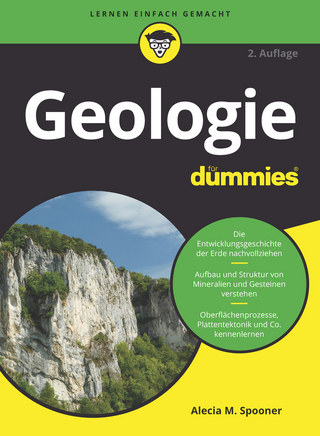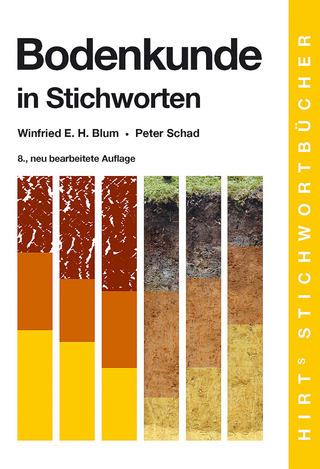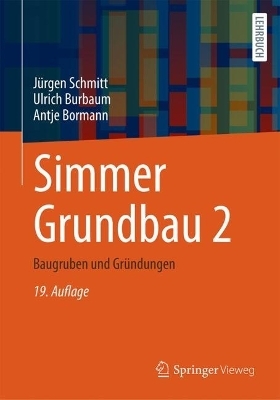
A Practical Introduction to Optical Mineralogy
Kluwer Academic Publishers (Verlag)
978-0-04-549007-3 (ISBN)
- Titel ist leider vergriffen;
keine Neuauflage - Artikel merken
Reflected-light microscopy is increasing in importance in undergraduate courses on ore mineralisation, but the main reason for combining the two aspects of microscopy is that it is no longer acceptable to neglect opaque minerals in the systematic petrographic study of rocks. Dual purpose microscopes incorporating transmitted- and reflected-light modes are readily available, and these are ideal for the study of polished thin sections.
1 Introduction to the microscopic study of minerals.- 1.1 Introduction.- 1.2 The transmitted-light microscope.- 1.3 Systematic description of minerals in thin section using transmitted light.- 1.3.1 Properties in plane polarised light.- 1.3.2 Properties under crossed polars.- 1.4 The reflected-light microscope.- 1.5 The appearance of polished sections under the reflected-light microscope.- 1.6 Systematic description of minerals in polished section using reflected light.- 1.6.1 Properties observed using plane polarized light (PPL).- 1.6.2 Properties observed using crossed polars.- 1.6.3 The external nature of grains.- 1.6.4 Internal properties of grains.- 1.6.5 Vickers hardness number (VHN).- 1.6.6 Distinguishing features.- 1.7 Observations using oil immersion in reflected-light studies.- 1.8 Polishing hardness.- 1.9 Microhardness (VHN).- 1.10 Points on the use of the microscope (transmitted and reflected light).- 1.11 Thin- and polished-section preparation.- 2 Silicate minerals.- 2.1 Crystal chemistry of silicate minerals.- 2.2 Mineral descriptions.- Al2SiO5 polymorphs 35; Amphibole group 41; Beryl 56; Chlorite 57; Chloritoid 58; Clay minerals 59; Cordierite 61; Epidote group 63; Feldspar group 67; Feldspathoid family 84; Garnet group 87; Humite group 88; Mica group 90; Olivine group 95; Pumpellyite 98; Pyroxene group 99; Scapolite 117; Serpentine 119; Silica group 120; Sphene 124; Staurolite 125; Talc 126; Topaz 127; Tourmaline group 128; Vesuvianite 129; Zeolite group 129; Zircon 131.- 3 The non-silicates.- 3.1 Introduction.- 3.2 Carbonates.- 3.3 Sulphides.- 3.4 Oxides.- 3.5 Halides.- 3.6 Hydroxides.- 3.7 Sulphates.- 3.8 Phosphate.- 3.9 Tungstate.- 3.10 Arsenide.- 3.11 Native elements.- 4 Transmitted-light crystallography.- 4.1 Polarised light: an introduction.- 4.2 Refractive index.- 4.3 Isotropy.- 4.4 The biaxial indicatrix triaxial ellipsoid.- 4.5 The uniaxial indicatrix.- 4.6 Interference colours and Newton's Scale.- 4.7 Fast and slow components, and order determination.- 4.7.1 Fast and slow components.- 4.7.2 Quartz wedge and first order red accessory plate.- 4.7.3 Determination of order of colour.- 4.7.4 Abnormal or anomalous interference colours.- 4.8 Interference figures.- 4.8.1 Biaxial minerals.- 4.8.2 Sign determination for biaxial minerals.- 4.8.3 Flash figures.- 4.8.4 Uniaxial minerals.- 4.8.5 Isotropic minerals.- 4.9 Pleochroic scheme.- 4.9.1 Uniaxial minerals.- 4.9.2 Biaxial minerals.- 4.10 Extinction angle.- 5 Reflected-light theory.- 5.1 Introduction page.- 5.1.1 Reflectance.- 5.1.2 Indicating surfaces of reflectance.- 5.1.3 Observing the effects of crystallographic orientation on reflectance.- 5.1.4 Identification of minerals using reflectance measurements.- 5.2 Colour of minerals in PPL.- 5.2.1 CIE (1931) colour diagram.- 5.2.2 Exercise on quantitative colour values.- 5.3 Isotropic and anisotropic sections.- 5.3.1 Isotropic sections.- 5.3.2 Anisotropic sections.- 5.3.3 Polarisation colours.- 5.3.4 Exercise on rotation after reflection.- 5.3.5 Detailed observation of anisotropy.- Appendix A.1 Refractive indices of biaxial minerals.- Appendix A.2 Refractive indices of uniaxial positive minerals.- Appendix A.3 Refractive indices of uniaxial negative minerals.- Appendix A.4 Refractive indices of isotropic minerals.- Appendix C Properties of ore minerals.- Appendix D Mineral identification chart.- Appendix E Gangue minerals.
| Erscheint lt. Verlag | 3.10.1985 |
|---|---|
| Zusatzinfo | biography |
| Verlagsort | Dordrecht |
| Sprache | englisch |
| Maße | 140 x 220 mm |
| Gewicht | 530 g |
| Themenwelt | Naturwissenschaften ► Geowissenschaften ► Geologie |
| ISBN-10 | 0-04-549007-4 / 0045490074 |
| ISBN-13 | 978-0-04-549007-3 / 9780045490073 |
| Zustand | Neuware |
| Informationen gemäß Produktsicherheitsverordnung (GPSR) | |
| Haben Sie eine Frage zum Produkt? |
aus dem Bereich


